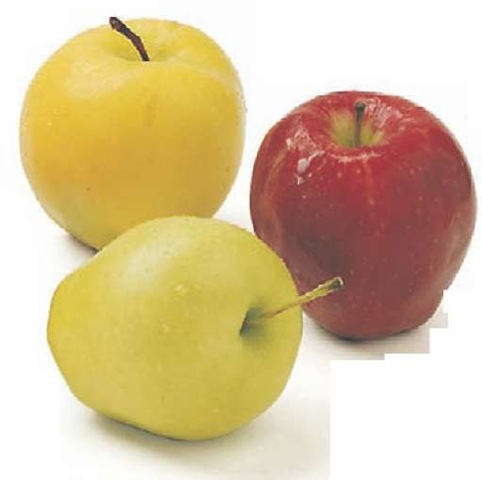There is no one perfect food. We need an assortment of nutrients that can be obtained only by eating a wide variety of foods. What is it that our bodies need? Scientists have identified more than 40 different nutrients in food. These substances are essential for growth and for the chemical reactions and processes that keep us alive and functioning (metabolism).
Except for an extremely small number of foods that consist almost entirely of one nutrient, the vast majority of the foods we eat are mixtures of many nutrients. Nevertheless, each group of foods included in the Food Guide Pyramid (grains, fruits and vegetables, milk products, and meats) is unique in the types of nutrients it contributes to our diets. For example, fruits and vegetables are the main source of many vitamins, minerals, and complex carbohydrates in our diets, and the meat group (including dry beans and legumes, eggs, poultry, and fish) is the main source of protein for most people.
It can be difficult to understand the difference between the nutrients themselves and the foods that contain them. For example, when you hear nutrition experts talk about the need to get more complex carbohydrates, what do they mean and what foods contain those nutrients? In this topic, we focus on the nutrients themselves—how they are digested, what happens to them in the body, and what they do for you. We also say a little about the best food sources of each nutrient, because, after all, when you go to the supermarket, you don’t look for protein, starch, fiber, and antioxidants, you look for chicken, rice, raisin bran, and orange juice.
Nutrients are sorted into categories on the basis of their chemical structures and functions. Carbohydrates, proteins, and fats contained in foods are known as the macronutrients, because they are required in the largest quantities. In addition to their other functions, macronutrients provide energy in the form of calories. Vitamins and minerals are known as the micronutrients. They are required by your body in much smaller quantities. Although the micronutri-ents help your body use the energy in macronutrients, they provide no energy (calories) themselves. Water is also an essential, calorie- free nutrient. The work our bodies do each day causes us to deplete some of our stores of these essential nutrients. Only by maintaining a diet that is rich in various nutrient-containing foods can we replace those lost nutrients.
In addition to the known nutrients, substances in foods of plant origin, called phytochemicals or phytonutrients (phyto is the Greek word for plant), have been identified in recent studies. These phytochemicals may promote health and help prevent certain diseases. Hundreds of such compounds are being identified in the fruits, vegetables, nuts, beans, and grains we eat, although only a few have been thoroughly studied. How these various phytochem-icals influence our health is a promising new area of research for nutrition experts.
Each of the macronutrients—carbohydrates, proteins, and fats—plays various roles in the function of our bodies. In addition to their unique functions, all of the macronutrients supply calories. When we eat more protein, carbohydrate, or fat than we need to replenish what we have used, the excess is converted to and stored as fat. Calories are used to support all muscular activity, to carry out the metabolic reactions that sustain the body, to maintain body temperature, and to support growth. But when we consistently take in more calories than we use, we gain weight. Weight is maintained when energy (calorie) intake balances energy output.

